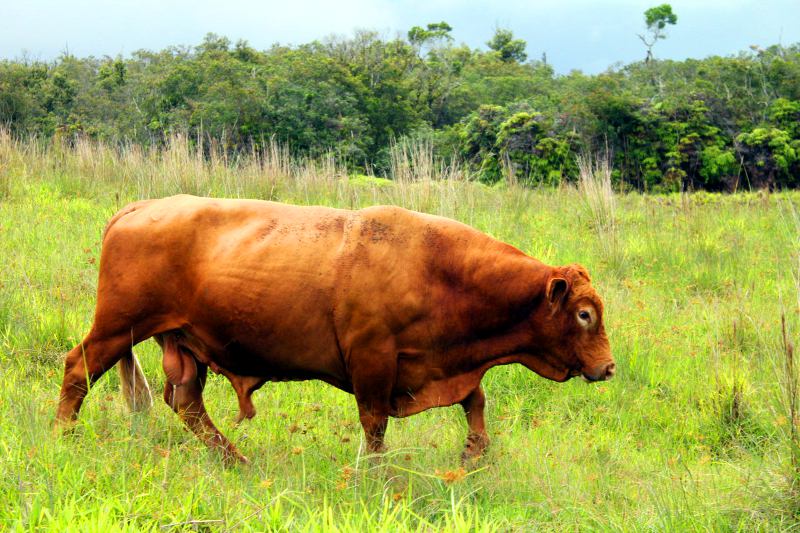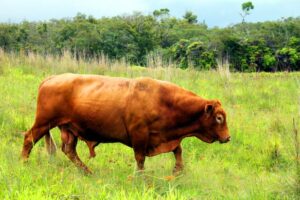
In 1793 Captain George Vancouver arrived on the Big Island of Hawaii and presented King Kamehameha with a gift of a dozen cattle. Many of these cattle became ill and died and the rest were killed and eaten. The following year, in 1794 Captain Vancouver returned to the island and presented the King with another dozen cattle, this time suggesting that they be protected for 10 years and allowed to multiply.
Kamehameha took this to heart and placed a ban on the hunting of cattle that wasn’t lifted for 36 years, at which point Kamehameha the Third introduced the Paniolos – Hawaiian Cowboys, and thus begun the Hawaiian cattle industry.
By 1846 a dozen cattle had turned into 35,000 animals living all around the island and on the slopes of the mountains. Throughout the 19th century the Paniolos turned the wild cattle into domesticated livestock. Today Big Island’s herds measure more than 75,000 strong with ranching being one of the island’s main industries.
Driving up through Waimea or across Saddle road one will pass by miles and miles of lush green pastureland. Most of this thick cover is Kikukyu grass. Originally from Australia it was introduced to the island in 1936 in order to feed cattle and now covers the majority of cattle grazing acreage from 1400 – 4000 feet.
So where can you get local big island beef? Surprisingly, the sources are rather sparse. If you want to eat locally meat-wise while on vacation your best bet is the Waimea area. Waimea is surrounded by the largest ranches on the island and most of the restaurants here serve local beef.
Buying a local steak at the market is sometimes a little tougher. KTA in both Hilo and Kona usually offer local meat (displayed separately from the regular imported stuff), but the majority of beef sold locally goes to restaurants and getting a good local steak to cook on your own can be tricky outside the cities unless you know where to look. One sure fire spot is JJ’s meat market in Honoka’a, which sells only grass fed local beef at very affordable prices.
KTA in Waimea receives local beef on Tuesdays and Thursdays, but expect the prices to be a little higher.
Sometimes ranches will sell directly to the public at farmers markets and roadside stalls, but the truth is that the vast majority of cows grown on the big island are shipped to the mainland to be sold, and most of the meat that Hawaiians consume is shipped in from the mainland.
Big island beef is some of the best quality around, as most ranchers raise grass fed cattle which is leaner and healthier than mainland grain fed beef, but because of this you can expect the price of local beef in most places to be up to twice as much as its imported mainland counterpart.
Waimea is the best destination for local meat, but for those staying elsewhere inquire at your local market.

